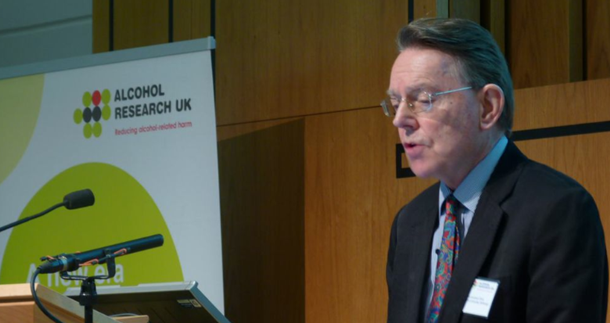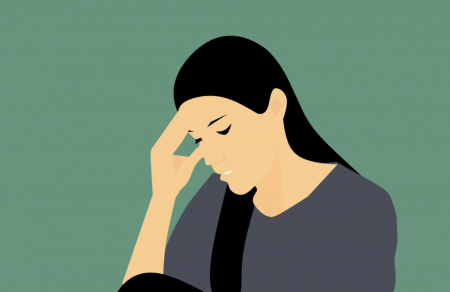Last winter in the UK, a young man was found dead in a bloodsoaked hotel bathroom. The inquest determined that he had died by his own hand. It emerged that, in a confused state, he had tried to alert staff where he was accommodated to his fears that he was unwell, but seems to have been disregarded as a drunk causing a nuisance.
The inquest did not link the death to alcohol because there was no alcohol found in the body at post mortem. He was known by friends and family to drink alcohol but had never been diagnosed or treated for that.
His lap-top computer showing messages and websites browsed in the last hours of his life, depicted a frightening sequence. He had sent this message:
“I had stupidly started on a drinking binge and never stopped until 3 days ago. I thought I was getting better today but now I have the shakes and am hallucinating whenever I close my eyes and can’t sleep. I’m sorry if this appears scary because it is . . . I’m not here to harm anyone. I have looked this up and I have all the symptoms for alcohol withdrawal. This is a treatable condition. I mean no harm, I just need a doctor. The moment they see they will prescribe medication. If you feel threatened by me, which it looks like you do, get the police to escort me. I need to get to a doctor or to try sleeping this off.”
In the hours prior to this, he had accessed websites giving information related to alcoholism, and in particular delirium tremens. He had looked at Wikipedia and other websites about alcoholism and the withdrawal syndrome. One site said withdrawing from alcohol was no worse than quitting smoking.
But elsewhere he could have found a link to this account published in 1844: The Horrors of Delirium Tremens by James Root 1844 . . . he recounts how after one particular drinking spree, he experiences the effects of Delirium Tremens. As he wanders from Manilus to Syracuse to Geddesburgh, he begins to hear strange, shrill noises and whispers. He strikes up conversation with the source of the noises, finding little to be unusual about his experience until he follows the voice to a group of ‘fiends’ and devils who threaten him with damnation. He climbs up a tree to try to escape them and even enlists the help of a local landlord, but to no avail.
Some people are able to sustain high alcohol consumption for long periods, and still function in their jobs and relationships. However, cessation of alcohol consumption after periods of very heavy drinking may precipitate the alcohol withdrawal syndrome.
The severity and pattern of bodily and mental disturbance varies according to the individual’s constitution, physical health, nutritional status and the duration and quantities of alcohol consumed especially if consumed continuously.
Brain chemistry adapts in numerous ways to compensate for the effects of heavy consumption of alcohol. When alcohol is removed, certain systems that have been ‘suppressed’, such as the alerting transmitter glutamate and the flight/flight mechanism (noradrenergic and corticosteroid system) overshoot as they spring back into action. The individual is agitated, tremulous, unable to sleep, and may become confused. Hallucinations and accompanying deluded thoughts do not always ensue, but if they occur typically commence 2-3 days after the last consumption of alcohol.
This may be frightening. Beliefs and hallucinatory voices may be convincing, even commanding the person to behave in a way that would be out of character, including self-harm. Such commands may be acted upon. There are reports of individuals who, under such influence, mutilated themselves. Patra et al. (2014) describe an individual inflicting multiple stab wounds on his abdomen during alcohol withdrawal, as did Roig et al. (2014), and Charan and Reddy (2011) report an individual mutilating his genitals.
Severe withdrawal symptoms are sometimes seen during detention on remand in prison or in police custody when there is forced immediate cessation of alcohol consumption. If there is no medical treatment delirium may ensue. The first few days in custody comprise a frequently reported risk-moment for suicide.
Hospitalization after trauma or for a medical condition resulting in sudden alcohol withdrawal can result in impulsive or even deluded behaviour leading to self-inflicted death (e.g. Edinburgh Evening News, ‘Patient Plunges from Hospital Window’, 1997). Bradvik and Berglund (2003) documented that from 1949 through 1969, 1312 patients with alcohol dependence were admitted to the Department of Psychiatry in Lund, Sweden. By 1997, 102 of those patients (of whom 99 were men) had committed suicide.
Their deaths were compared with those of other suicide victims who had been previously diagnosed with severe depression or other illnesses. For the patients with alcohol dependence there was a suicide peak on the first 2 days after weekends and holidays. Alcohol withdrawal was suspected to be a contributor to that suicide peaksuggesting that trying to get sober for work on Monday after holiday or weekend heavy consumption of alcohol carries a risk for some drinkers.
The inquest mentioned above made no mention of factors that might have led to that violent death.
This article was first published in the scientific journal “Alcohol and Alcoholism”. The original version includes all references to the quoted research: http://alcalc.oxfordjournals.org/content/early/2015/05/05/alcalc.agv041
Image courtesy of Alcohol Research UK



